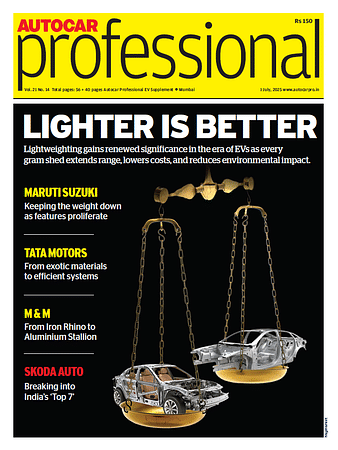Bajaj plans to target gig workers with 'family scooter'
While electric two-wheeler manufacturers have long targeted the gig economy market, Bajaj claims to be taking a distinctive approach by looking beyond just functionality and cost-efficiency in its design philosophy.
Bajaj's Chetak has plans to introduce electric scooters specially designed for gig workers that double as family vehicles, recognising that delivery professionals seek both functionality and social status in their vehicles.
"Gig workers don't want a vehicle that shows them as gig workers, they want a family vehicle. We will have Chetak models which will be used for delivery but they will be designed recognising the fact that gig workers need a family vehicle," said Rakesh Sharma, executive director of Bajaj Auto, at a round table in Pune after the unveiling of the latest Bajaj Chetak 35 series.
With the new strategy, the brand will emphasise ownership pride and social status alongside practical delivery capabilities in its redesigned Chetak.
The company believes this dual-purpose design strategy will expand the gig economy by attracting new workers who previously hesitated to join the sector. According to Sharma, the redesigned Chetak will maintain pride of ownership while serving professional needs.
The timing aligns with significant growth in India's gig economy. A 2022 Niti Aayog report revealed nearly 15 million gig workers across various sectors including delivery, cleaning, consulting, and blogging. The report highlighted how digital platforms have enabled job flexibility, allowing workers to engage with multiple contractors simultaneously while reducing information asymmetry in job searches.
The gig economy represents a substantial revenue opportunity for electric two-wheeler manufacturers in India through multiple channels. Manufacturers can capitalise on the growing demand for efficient, cost-effective vehicles from gig workers. Additionally, the lower running costs of electric vehicles open opportunities for rental and leasing options, including subscription-based models that bundle maintenance, insurance, and battery-swapping services.
This platform-enabled sector operates on an outcome-based model, minimizing moral hazard risks while offering managers access to diverse talent pools and standardised outcomes. Low entry barriers have contributed to the sector's continued expansion, with platforms like Uber demonstrating versatility through various service offerings.
Moreover, competitors like Ola have already contributed to the gig economy by offering Ola Gig and Gig+ electric scooters. The Ola Gig has been designed as a commercial two-wheeler, and as such, it comes with a large single seat for the rider as well as a big carrier at the back.
The scooter uses drum brakes at both ends and has a telescopic front fork. The Ola Gig base model comes with a small 250-watt motor and has a top speed of 25kph, which means it can be used without having to be registered. This product will be a rival to the Yulu models we see zipping around in major metro cities.
The Ola Gig+ comes with a much more powerful 1.5kW motor and has a top speed of 45kph, which means it will have to be registered for road use.
Both scooters come with a single removable 1.5kWh battery pack, which can be extended to two packs if you buy the Gig+. The company claims a range of 112km for the Gig and either 81km or 157km for the Gig+, depending on whether you buy it with one battery or two.
RELATED ARTICLES
Govt to Release PM E-Drive Subsidy Guidelines for Electric Ambulances by Year-End
Electric ambulances have been included for demand incentives under the PM E-Drive scheme. Only one electric model made b...
Mercedes-Benz India Sees Flat-to-Single-Digit Growth in 2025: MD Iyer
Managing Director Santosh Iyer expects a high base, price hikes, and geopolitical uncertainty to weigh on the second hal...
Mercedes-Benz India Begins FY26 with Highest-Ever Q1 Sales
The launch of the GLS AMG Line adds to Mercedes-Benz’s SUV offerings and aligns with its broader strategy to strengthen ...





 21 Dec 2024
21 Dec 2024
 9352 Views
9352 Views





 Kiran Murali
Kiran Murali



 Darshan Nakhwa
Darshan Nakhwa

